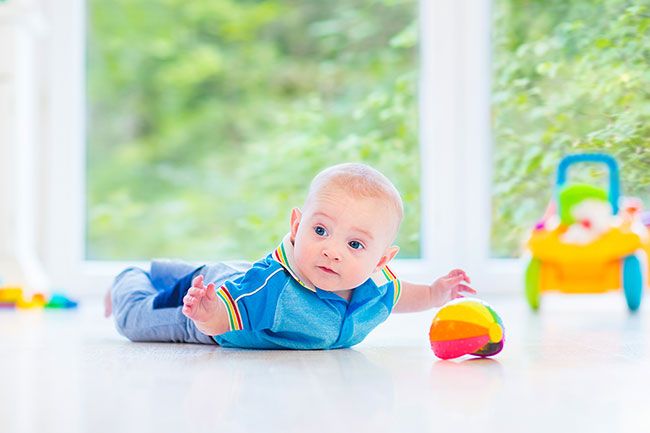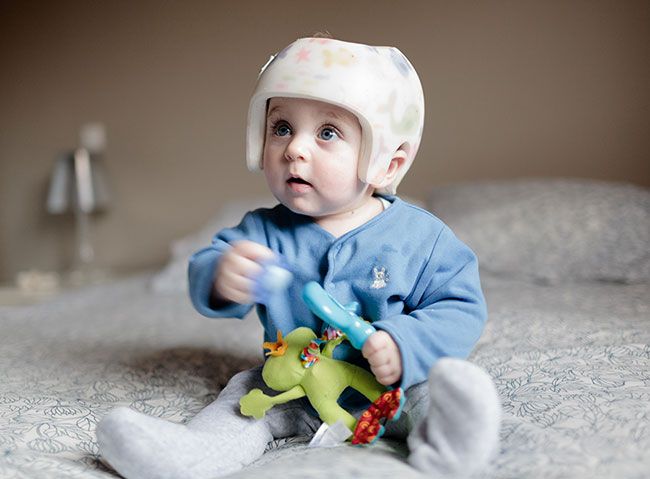Around half of all babies under the age of one show some signs of flat head syndrome, usually because they have spent too much time lying on their back. According to the NHS, there are two types of "flat head syndrome", plagiocephaly, which is when the head is flattened on one side, and brachycephaly, when the flattening happens to the back of the head.
These problems are quite common and it affects around one in every five babies at some point, here are some reasons why, as explained by the NHS:
- Sleeping on their back – the back or side of a baby's head can become flattened as a result of always sleeping on their back, but it's important they do this to reduce the risk of sudden infant death syndrome (SIDS).
- Problems in the womb – pressure can be placed on a baby's head before it's born if things are a bit squashed in the womb or there's a lack of amniotic fluid to cushion the baby.
- Being born prematurely – premature babies are more likely to develop a flattened head because their skull is softer when they're born and they may prefer to rest their head on one side at first because they're not yet able to move their head themselves.
- Neck muscle tightness – this can prevent a baby turning their head a particular way, meaning one side of their head is placed under more pressure.
If a doctor determines that your baby has plagiocephaly, the recommendations will depend on your baby's age and the severity of the condition. If your baby appears to have mild skull flattening and is under 4 months of age, repositioning techniques can be an effective way to reverse the effects of flat head syndrome. NHS recommend several simple messures that will take pressure off the flattened part of their head:
- Tummy time: give your baby time on their tummy during the day – encourage them to try new positions during play time, but make sure they always sleep on their back as this is safest for them.
- Change the position of toys and mobiles in their cot: this will encourage your baby to turn their head on to the non-flattened side.
- Alternate the side you hold your baby when feeding and carrying.
- Reduce the time your baby spends lying on a firm flat surface, such as car seats and prams – try using a sling or front carrier when practical.
Other measures can be taken to help, such as physiotherapy, which can help loosen and strengthen neck muscles if your baby is having problems turning their head. Some also claim that specially designed helmets and headbands can help improve the shape of a baby's skull as they grow, but you should bear in mind the inconvenience, expense, and possible discomfort for you and your child.











